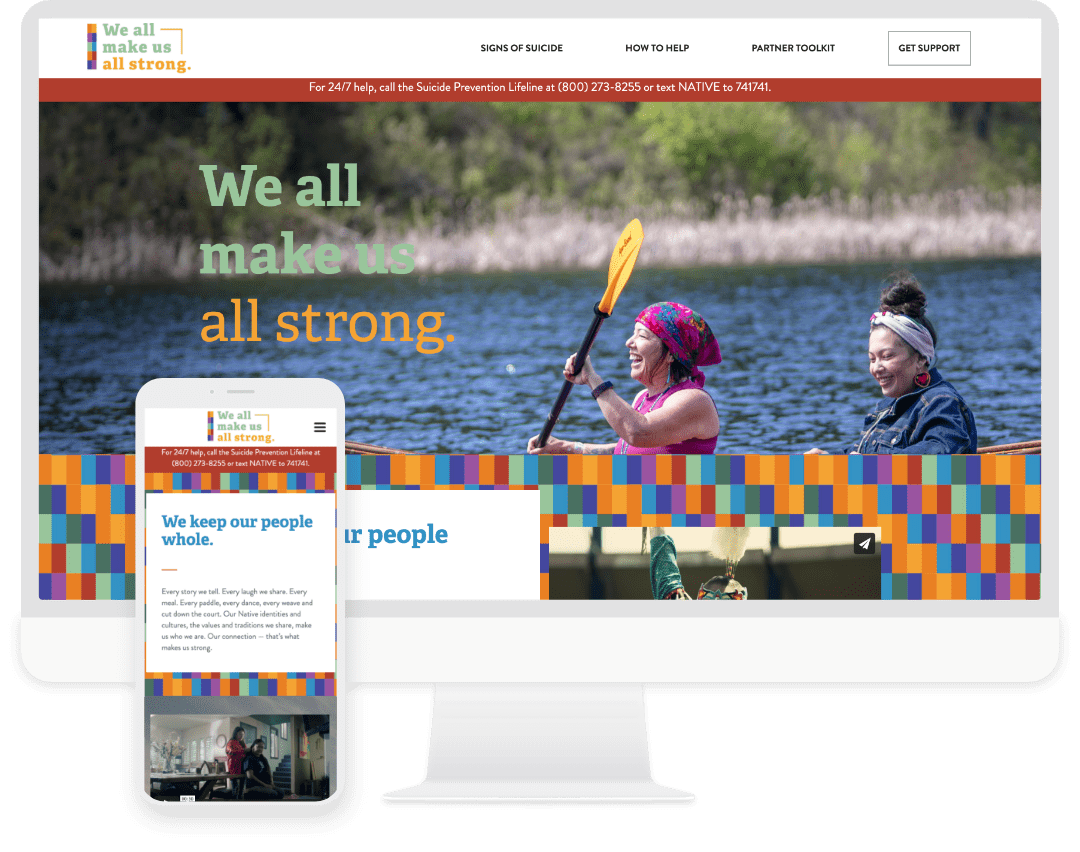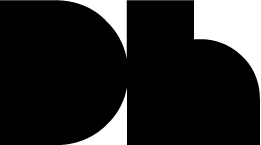Engaging our audience for suicide prevention
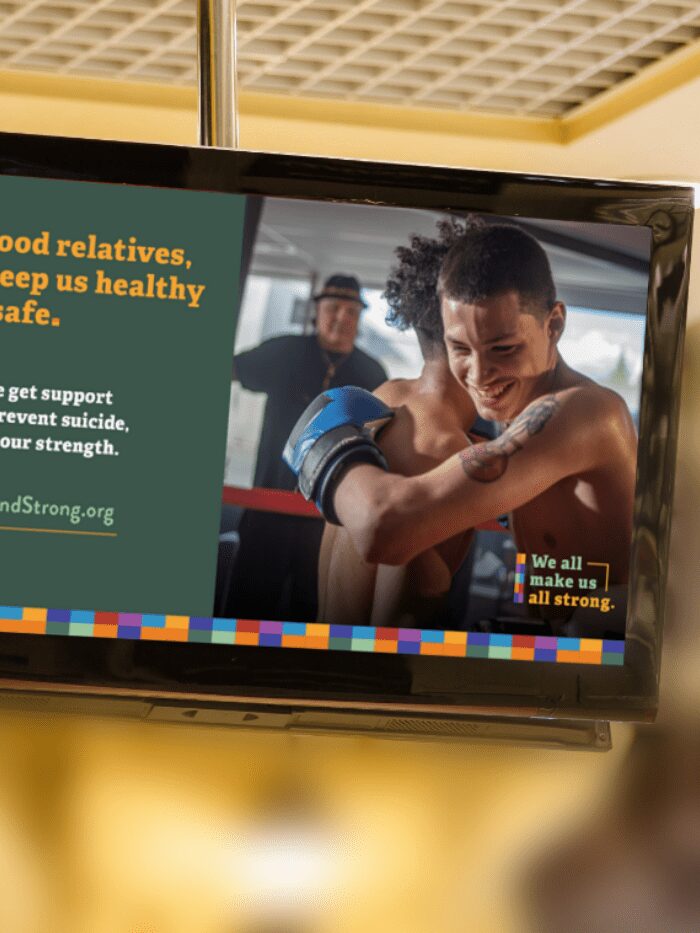
The challenge
Washington has one of the highest suicide rates among Native Americans and Alaska Natives. Meanwhile, suicide-prevention campaigns created for general audiences often miss the mark for Native people. In these communities, broad prevention campaigns can seem irrelevant or culturally inappropriate.
That’s why the Washington State Department of Health’s Suicide Prevention Program partnered with DH to create a campaign to reach the state’s diverse Native communities. As we began work together, we knew some important principles would guide the campaign’s development.
First, we knew a strengths-based campaign — a positive narrative — would be more effective than messaging about the risks and adversities facing tribal members. Second, we knew that Native perspectives and voices would need to shape the campaign.
Our challenge: to engage our diverse audience to create a social change marketing campaign that was truly collaborate and culturally responsive — with the goal of connecting Native people with relevant behavioral health resources and support.
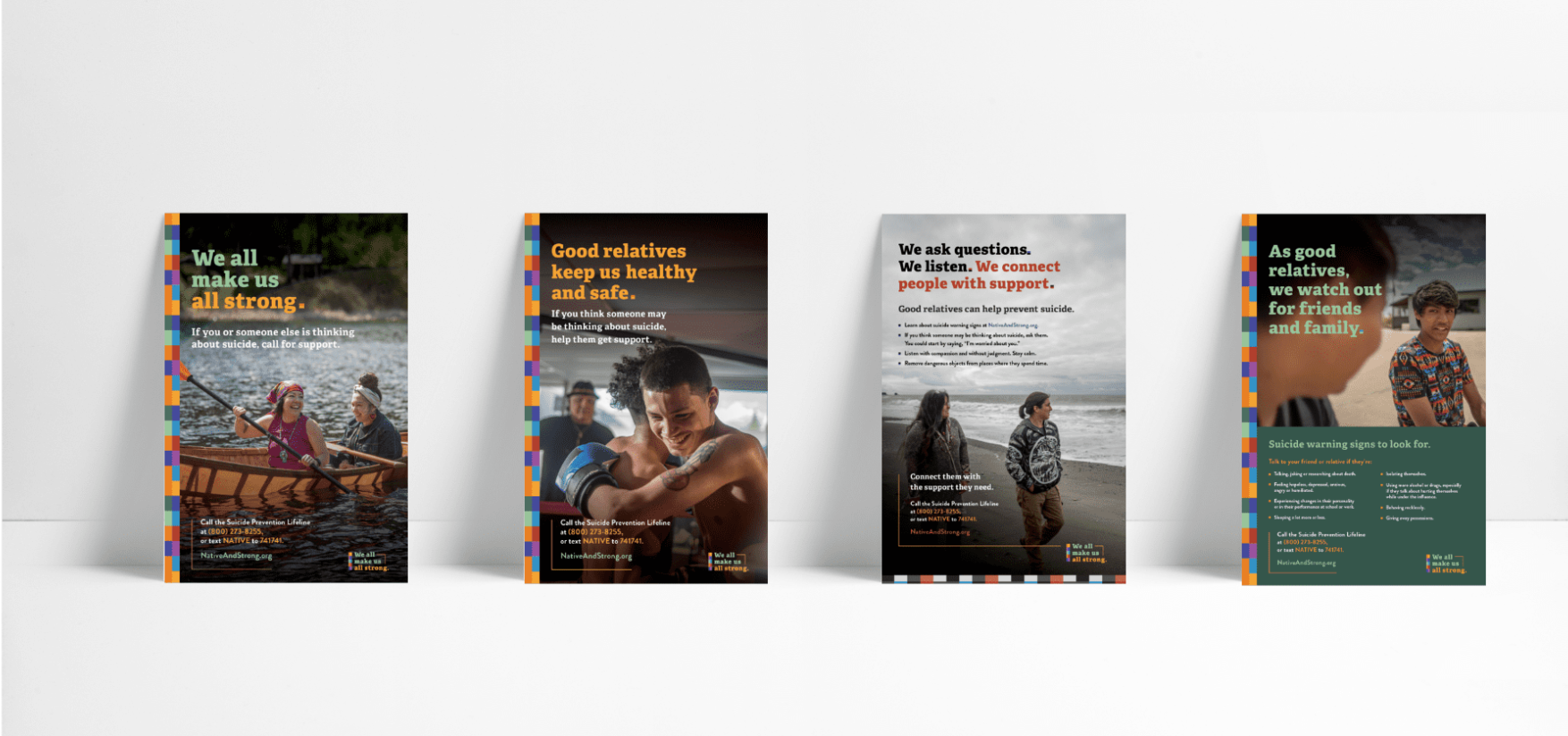
The Native and Strong campaign toolkit includes posters celebrating Native people’s strength and resilience, featuring photos of tribal members from across the state. They also tell people how to recognize the signs of suicide and get support.
The approach
Creating a culturally appropriate campaign would require authentic engagement with audience members at every step. More than “community input,” we committed to involving tribal members and behavioral health partners throughout development. Not until we listened to Native audiences — quieting our own voices — would we have a nuanced, relevant and meaningful campaign.
federally recognized tribes in washington
one-on-one insight interviews
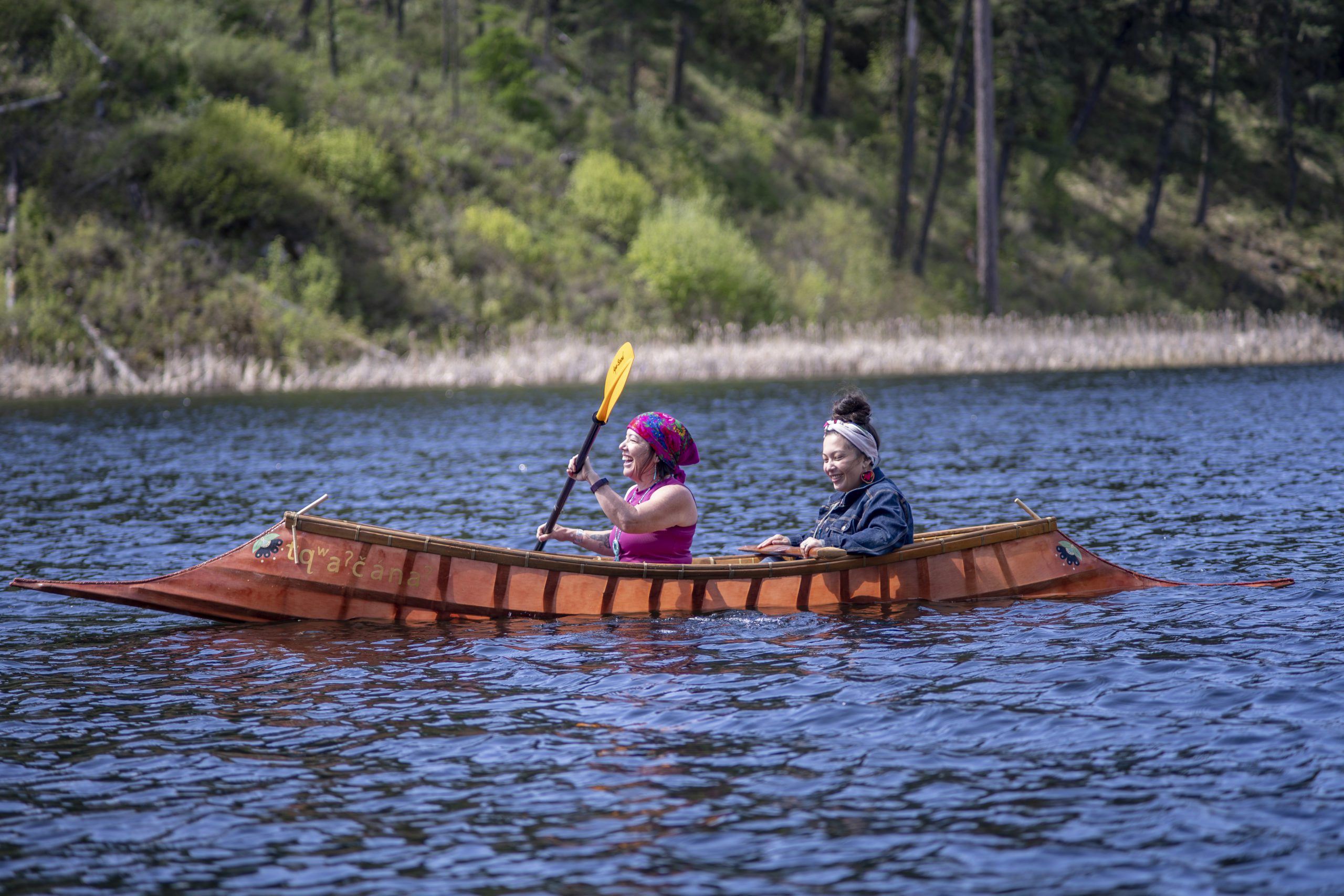
In partnership with Counting Coup Media, we traveled to spots throughout the state to create custom photos. Many images portray Native people taking part in cultural activities, such as paddling traditional canoes.
In a series of more than 20 one-on-one interviews, we spoke with Native people and behavioral health professionals working in tribal communities. We heard about how different tribes talk about suicide differently and address risk. (There are 29 federally recognized tribes in Washington, plus tribes that aren’t federally recognized and Native people who aren’t enrolled in any tribe.) We heard about the importance of culture and family, and about “good relatives” — a phrase that describes how Native folks care for one another and model behaviors. We heard about holistic approaches to wellness.
These values and strengths provided the basis for our campaign concept and messaging. When it was time to test that messaging, we worked with Native reviewers from diverse backgrounds. To hear from young adults, we met with a group of students invited on our behalf by Native-owned research and consulting company, Kauffman & Associates. In response to one video script that portrayed the experiences of people thinking about suicide, the young people told us:
“We know we live with the effects of trauma. We don’t need to be told. We want to see and hear what makes us strong.”
They were the experts. We changed the script.
As the campaign messaging took firmer shape, we began working with a Native American-owned production company in Spokane, Counting Coup Media, to plan photo and video shoots. While we had ideas gathered from tribal members and other research, these partners were the experts on locations, activities and relationships that would resonate with tribal members. We stepped back as they — with the Native talent they recruited for the videos and photos — took the lead on identifying shoot locations and scenes.
And as we planned animated spots along with live-action videos, Counting Coup helped us recruit Native American artists living in Washington. The artists created illustrations of Native characters that Counting Coup brought to life.
Our 30- and 60-second live-action videos amplify Native people’s people’s sources of resilience and strength. Cultural connection and a strong sense of tribal identity are clear protective factors against suicide for tribal members.
Animated spots about the signs of suicide and how to help a person at risk are based on original illustrations by Native artists in Washington: Paige Pettibon, Chad Yellowjohn, Sheldon Pierre Louis, and Sandra Warriors Pistol Bullet.
What we did
We created a campaign that reflects the values our audiences told us about: the importance of “wholeness” and mutual support. It also reflects the sources of strength — and the protective factors against suicide — they affirmed in our conversations. Those include a strong sense of Native identity and connections with tribal culture, friends and family, and community.
“We all make us all strong” is the framework. It comes alive when Native people from across Washington show and tell the sources of their strength in videos and photography. We created a microsite, at NativeAndStrong.org, that showcases the live-action and animated spots. The site also has pages about the warning signs of suicide and culturally appropriate information about how to help someone who might be thinking about suicide. Throughout the site, viewers are encouraged to call or text culturally responsive resources for support.
A partner toolkit of resources includes rack cards, posters, videos and social media posts. Our team also provides hands-on support to tribes and others (at no charge to them) who want to customize campaign materials, or create new ones, for their audiences. And, partnering with Native-owned media and vendors throughout the state, we continue to run a series of PSAs in print, on radio and social media, and out-of-home advertising targeted to reach Native audiences.
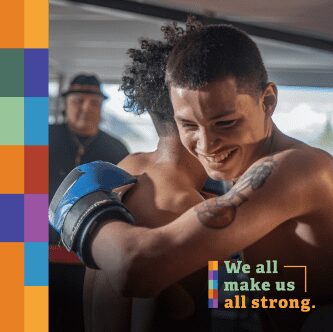
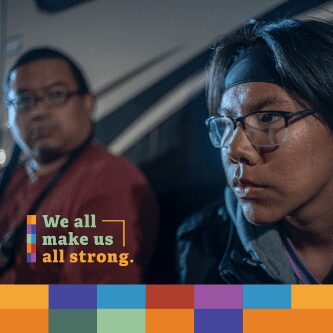
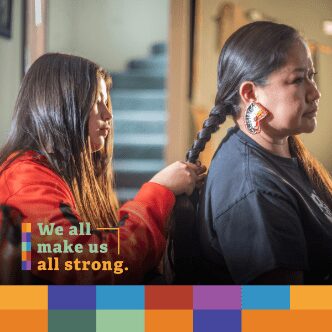
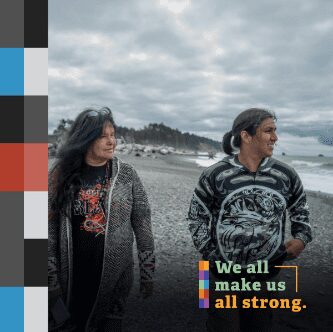
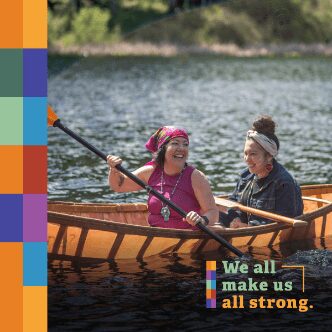
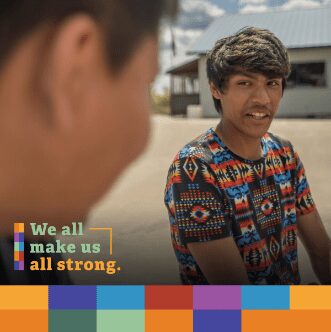
Good Relative
How to Help
We created a series of social images and radio spots as part of the toolkit. Like the campaign videos, these pieces feature Native people who live in Washington.
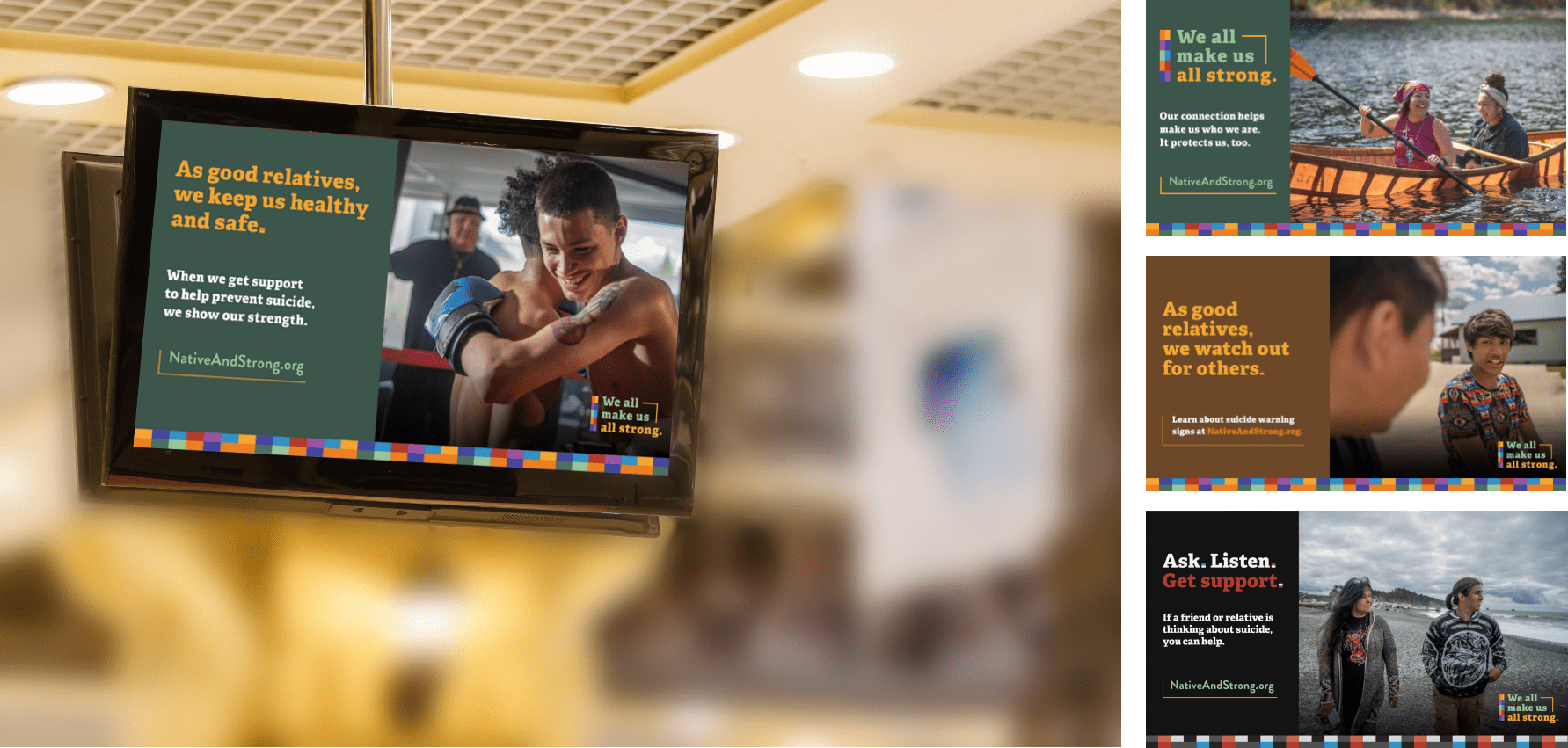
Among pieces available in the toolkit: digital screens with campaign messaging for tribal organizations and others to download and use.
The results
After the first, two-month paid media flight, 8,200 people had visited NativeAndStrong.org. Our top source of traffic to the site was display ads, followed by more than 1,300 direct users. We attributed the latter to our focus on traditional media tactics and direct tribal outreach.
We remain in contact with tribes and tribal organizations to ensure leadership and health staff are aware of the campaign and the toolkit of resources. We’re working with a number of organizations to create customized materials.
Best of all, our partnership with DOH’s Suicide Prevention Program continues — with existing campaign materials continuing to reach audiences and research underway for the campaign’s next phase.
